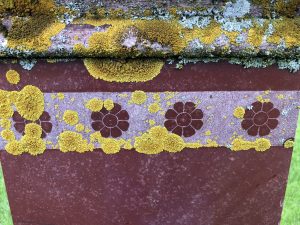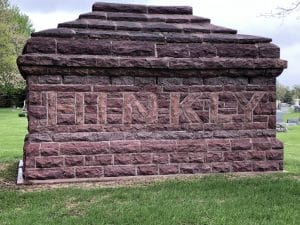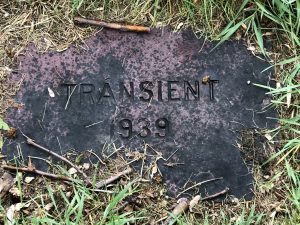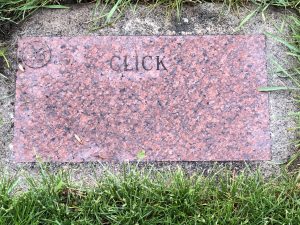Stone and its permanence.
We stop to visit all my old friends in the hometown cemetery.
We clean the ground level grave stones and back off the encroaching grass as a cold mist and rain temper our resolve.
The stones are made of Morton Gneiss (Sioux Quartzite), a stone that is native to the region in which I live.
It is a stone that has recently found favor with enlightened locals. For many years it was not available because its hardness made it nearly impossible to cut and work.
The Swedish stone cutters died out a hundred and twenty years earlier and the stone quarries went idle.
During that time they had the talent, strength and resource to use this stone for building purposes throughout the MidWest, transport by rail.
There was just barely enough labor and skill to use this stone to honor those hardy Swedes that eventually were buried in this cemetery.
Most of the Sioux Quartzite grave stones are from 1880 to 1905 and then there is a long, long pause. The stone cutters had died off and few were left to carry on this demanding skill that required “reading the stone” to determine the grain and to have the tools, strength and talent to shape a three billion year old piece of the earth.
They were seldom used again until the regional quarries bought an Italian stone saw in the 1990’s. The saw was sharp enough to mechanically cut through this stone that measures #9 on the Moes hardness scale.
I searched in vain for the stone cutters graves, I thought I knew where they were in the cemetery?
Enclosed are some photo’s of gravestones that capture some of the talent of those early Swedish stone cutters.

#2. Hinkly was the owner of the local quarry where this stone resided.
#3. TRANSIENT- In 1939, witness that we held other humans (that we didn’t come to know ) in such high enough regard, that we went to great efforts to respect and memorialize their being.
# 4 in a moments time.
RoadNotes BillKeitel.com



